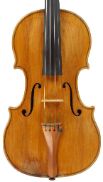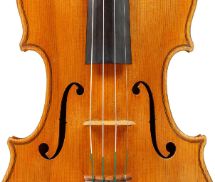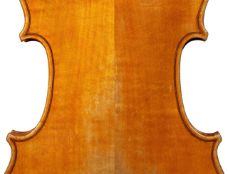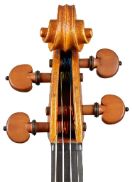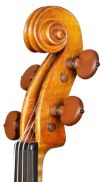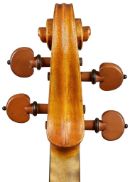Violin, Ferdinando Gagliano, Naples, 1770−1780
Printed label with a decorative border: “Ferdinandus Gagliano Filius / Nicolai fecit Neap. 1743.” (43 handwritten)Nicolò Gagliano’s son Ferdinando was a third-generation luthier of the Gagliano violinmaking dynasty in Naples. He is likely to have apprenticed with his uncle Gennaro, but still took over his father’s workshop later. Ferdinando’s three brothers also worked as violinmakers in Naples. Some instruments are likely to have been collaborative projects. The flat arching of the body is typical of Ferdinando Gagliano’s work. On the spruce belly, areas with very broad annual rings alternate with more finely grained areas. A dendrochronological analysis pinpointed the youngest growth ring to 1716 for both halves of the belly. Moreover, the wood was found to be a close match to that of two instruments made by Ferdinando or Carlo Gagliano. The belly wood of all three instruments is probably from the same log. The violin’s back and ribs show very faint, horizontal flaming, while the very broad pegbox and scroll are carved from unflamed maple. The volutes of the scroll are deeply undercut, making them appear highly sculptural. Much of the original marvelously luminous, yellow-orange varnish is still present atop a very transparent ground. As violins used to be played without chin rests, the varnish has worn away from this area and from the corresponding area on the back plate. Otherwise, the instrument shows only slight signs of wear and only few repairs. Given the excellent state of preservation, this instrument may be considered a reference example of the Neapolitan school.


